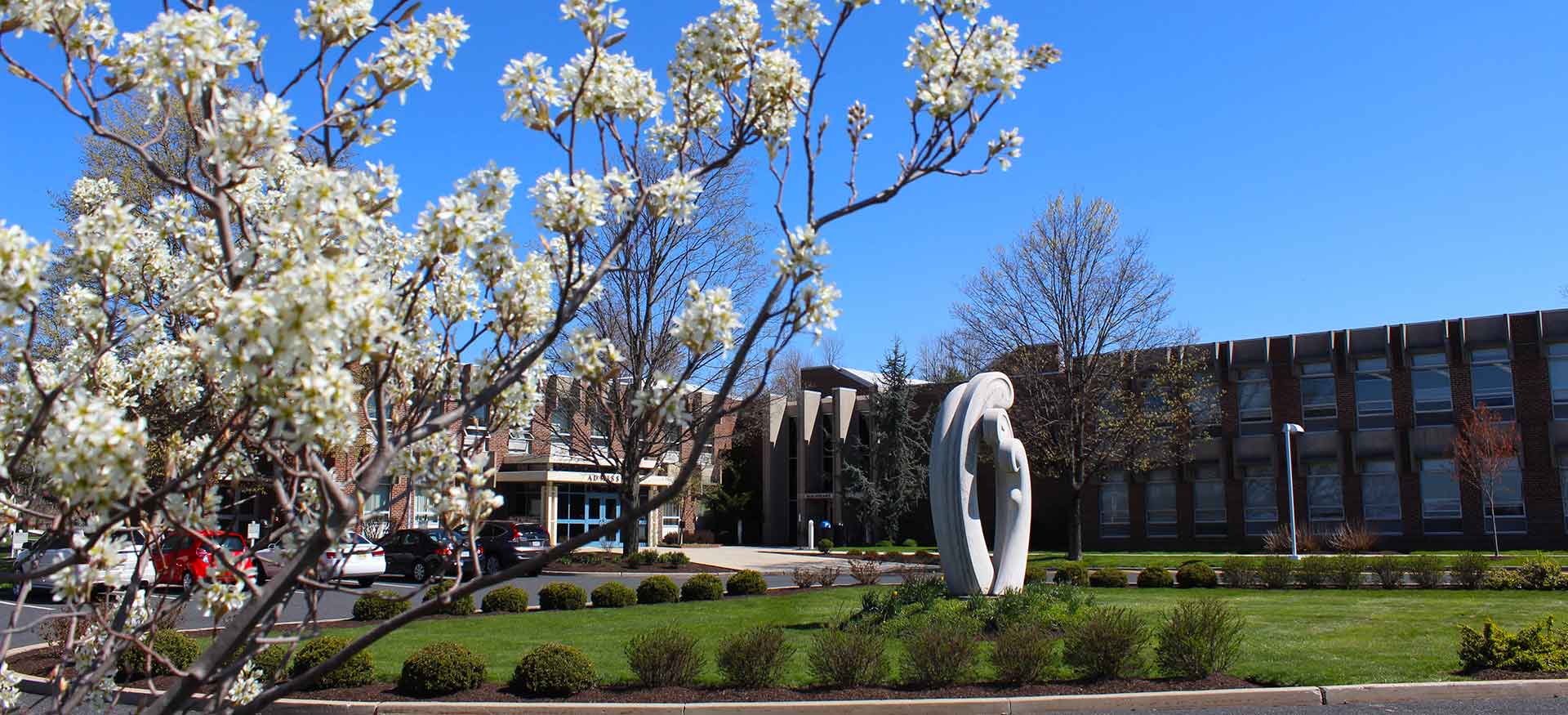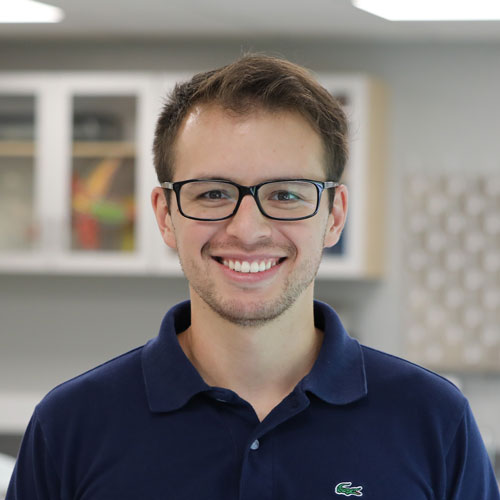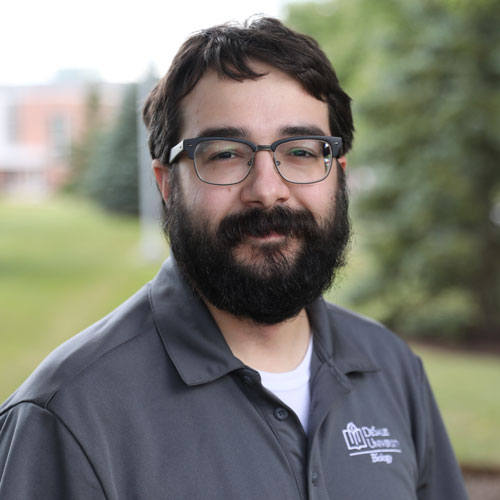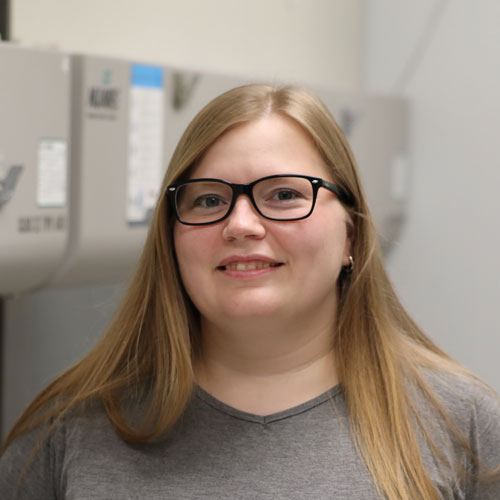Nine Students, Three Labs, One Invaluable Summer Experience
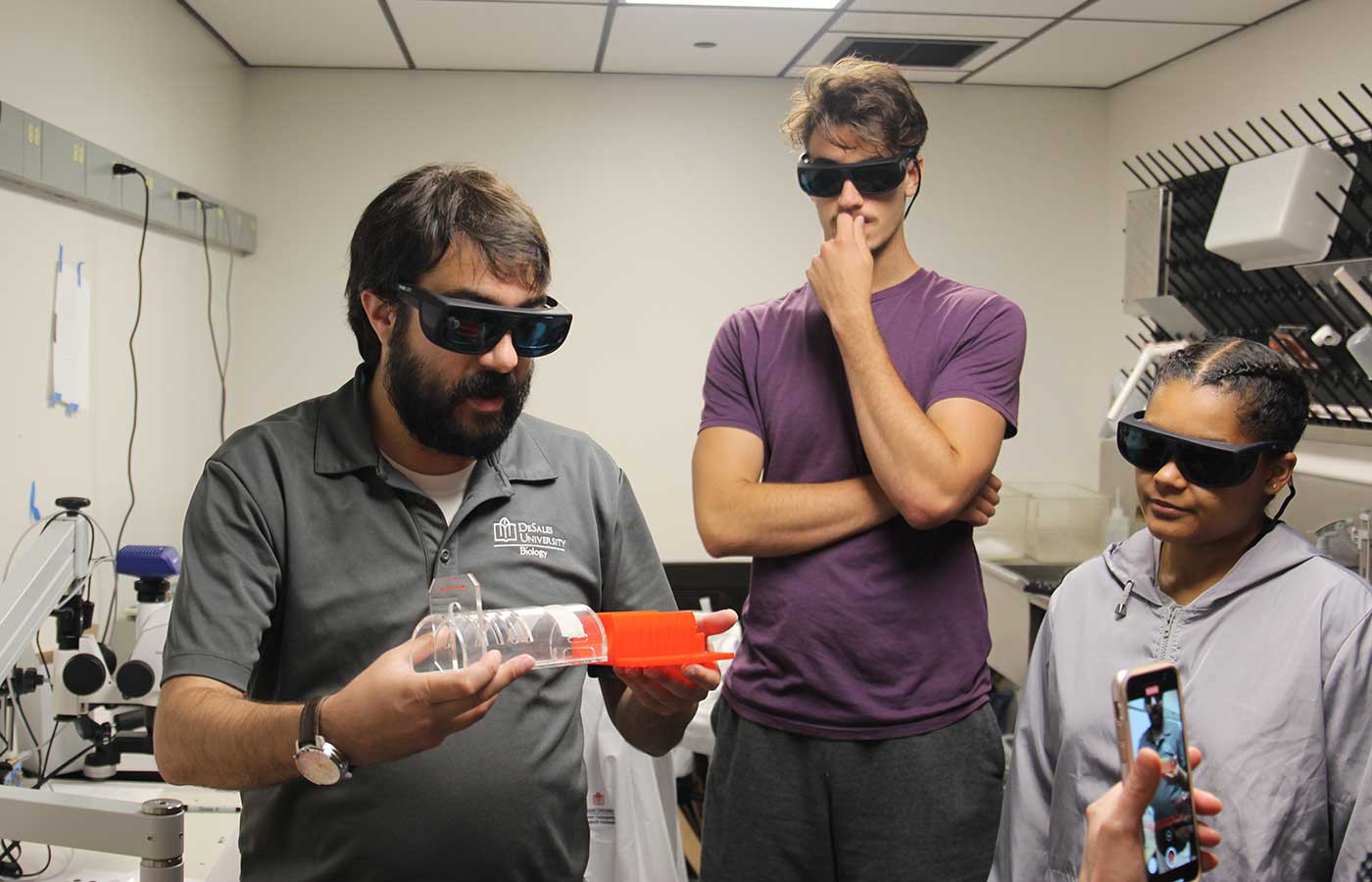
Dr. Alex Krupka with SURF students Coby Rush '22 and Ciara Martin '22.
Dr. Alex Krupka’s summer lab was filled with wires, power drills, and a 3D printer—not the type of equipment you’d expect to find in biology research.
But this was no ordinary lab. Krupka’s students—Ciara Martin ’22, Carl Tyce ’23, and Coby Rush ’22—spent the summer learning how to build a laser to test sensitivity to thermal pain in rats.
The experience was all part of the Summer Undergraduate Research Fellowship (SURF) in the Natural Sciences, a program that pays students to conduct research. Nine student fellows in three different labs worked 40 hours a week for eight weeks, and each received a $3,000 stipend.
Tyce learned how to write code while Rush worked on the 3D modeling. Martin oversaw the research and prepared the protocol. The lab proved to be an entirely new learning experience for all three—one that required a great deal of collaboration and communication.
“None of us really knew what we were doing at first,” says Rush, a biochemistry-molecular biology major. “So, we were each separately collecting information that we had to share and make sure that we were all on the same page. Those kinds of communication skills are really important when we’re going to be working on bigger, more elaborate projects in the future.”
Adds Martin: “I’m looking to go to PA (physician assistant) school, which is a lot of collaboration. When you’re a PA, you have to adapt, think on your feet, and work with others. So, I think this will definitely help.”
The lab builds off Krupka’s work as a graduate student with proteins called neurotrophic factors, which guide the growth of neurons. According to Krupka, they’ve shown strong evidence of effectiveness in recovering locomotion after a spinal cord injury. But they’ve also been found to increase an animal’s sensitivity to pain.
Krupka and his students want to find the point where a stimulus, in this case a laser, becomes noxious. He likens the experience to someone poking your skin.
“When someone pokes you, it’s annoying,” he says. “If they keep poking you, you eventually hit a point where you say, ‘Okay, I’ve had enough.’ We can apply a very precise amount of force until the animal essentially says, ‘I don’t like it.’ We’re not damaging the skin; we’re not hurting it; it’s just annoying.”
Researchers typically run the experiment using hot water or incandescent light bulbs. But Krupka says the equipment used with those experiments can be both expensive and hard to calibrate. He wanted to design something simpler that would be consistent and more cost effective for other labs to use.
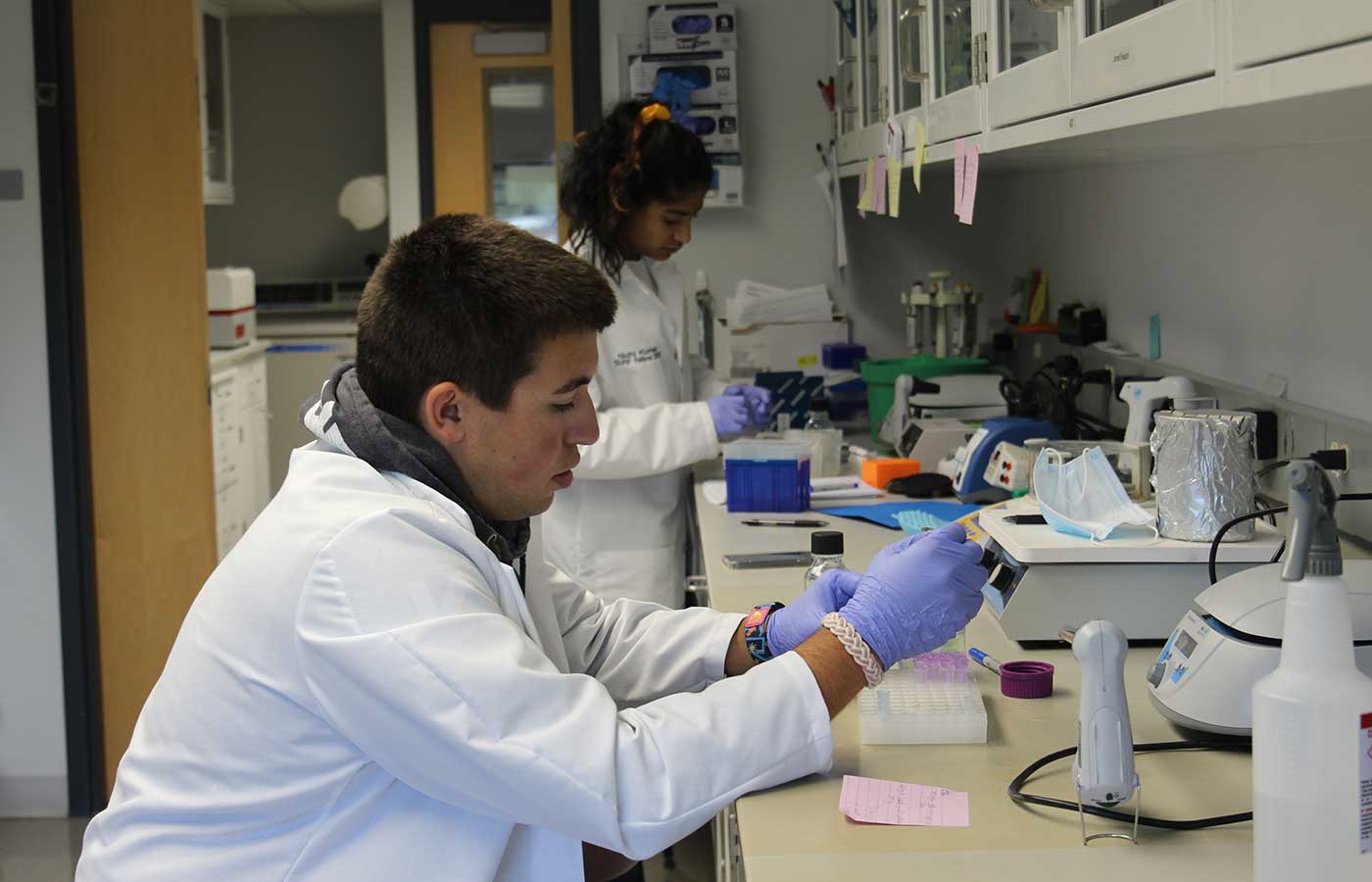
SURF students Nidhi Kumar ’24 and Jared Franges ’23
Coronaviruses and the Immune System
How do coronaviruses interact with the immune system? That’s the question research students in Dr. Dia Beachboard’s lab worked on this summer.
“If you get infected with the coronavirus, it’s really important that your immune response is able to shut down that virus,” Beachboard says. “We’re looking at how the virus is actually counteracting that response.”
Researchers know that the virus blocks the normal signaling pathways inside the cell that detect that it’s been infected. They just don’t know how. Based on evidence with pig coronaviruses, Beachboard says it’s believed a viral protease, or protein, is breaking down other proteins in that pathway. Her students—Brennan Gerancher ’22, Nidhi Kumar ’24, and Jared Franges ’23—worked with a mouse coronavirus to extract the protease.
“We work with the cells, split them, infect them, whatever we need to do,” says Gerancher, a biology major who’s looking to go into the research field. “We work with all the basic procedures like PCR and gel extractions.”
The students also cloned different genes for the host proteins that they believed were being broken down, or cleaved, and used bio-informatics software to predict cleavage.
“You don’t get this experience—undergraduates being hands on with real research—at many other colleges,” says Franges, a biology major. “It’s definitely a once-in-a-lifetime experience for an undergrad to be doing research in a lab like this.”
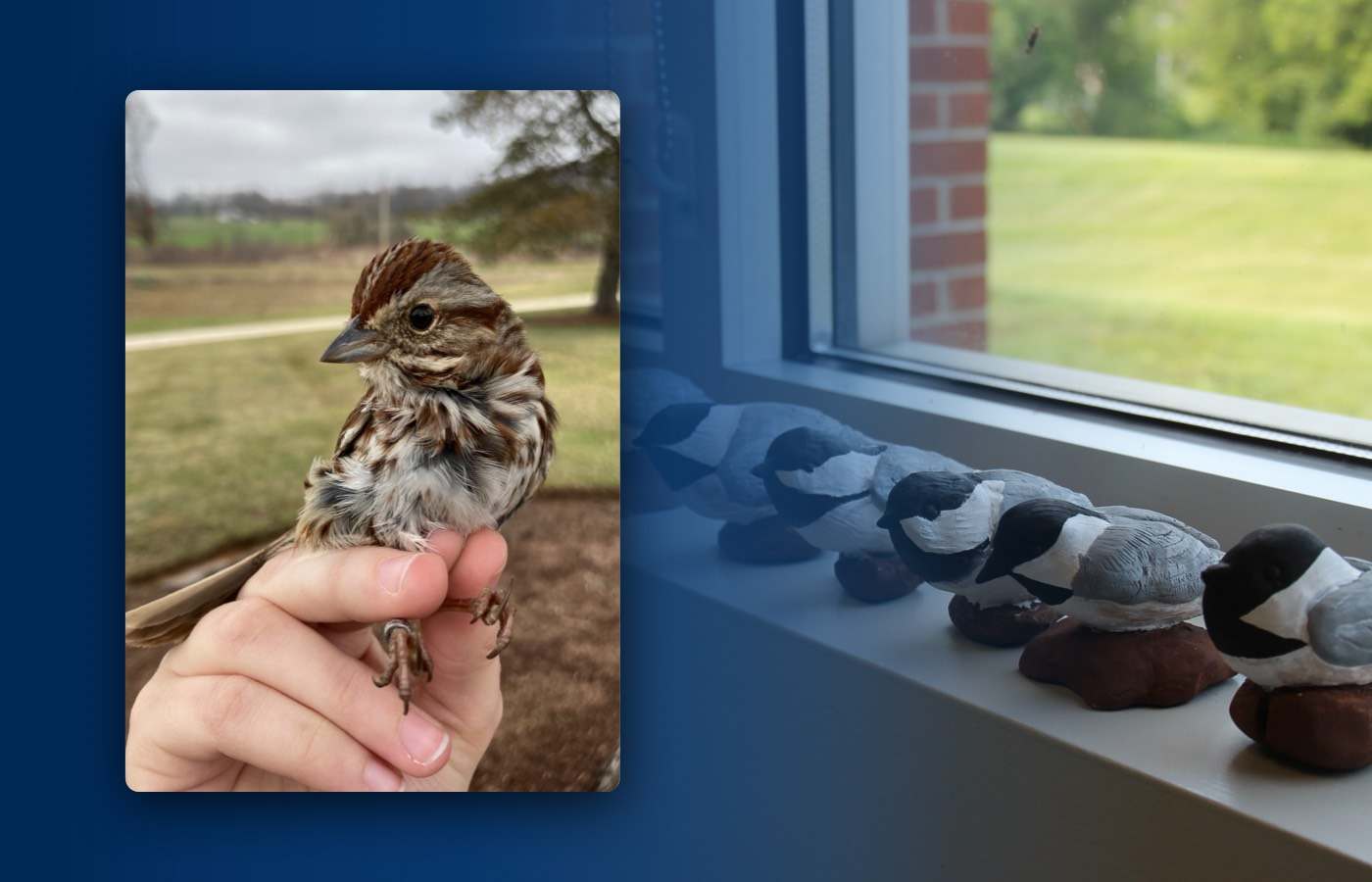
A SURF student holding a wild bird on campus (foreground), and SURF student hand-crafted dummies used to attract birds (background)
The Chemical Ecology of Birds
If you walked around campus this summer, you might have spotted clay caterpillars scattered around trees.
The fake insects were all part of Dr. Alex Huynh’s SURF lab studying the chemical ecology of birds. The group wanted to test whether birds would use odor cues from plants to help zero in on insect prey.
“Plants have a lot of different ways to defend themselves from herbivores,” says Huynh, a chemical ecologist and assistant professor. “Sometimes they have spines or produce noxious chemicals, but plants can also release airborne volatile compounds to attract insect predators to come and eat the herbivore.”
Huynh and his students—Catie McGrath ’23, Mercille Nguyen ’25, and Caitlin McNamara ’23—used two different chemicals to attract birds, and they measured predation by looking at whether the clay caterpillars had pecking marks.
The experience helped McGrath, a biology and chemistry double major, better understand the research process.
“Learning how to design and run an experiment from start to finish is something that not a lot of people get to do, even during the regular semester,” she says.
The group also worked on two other sub-projects: determining DeSales’ location in the hybrid zone of the black-capped and Carolina chickadee, and chemically characterizing preen oils in different songbird species on campus. For both projects, students set up mist nets around campus to catch the birds and collect their samples.
“I learned a lot of transferrable skills because I want to work with wildlife in the future,” says Caitlin McNamara ’23, a biology major. “Handling wild birds and learning all the steps to handle them carefully has really helped me.”
All three groups presented their findings during an episode of the Virtual Scholar Series. The SURF program is possible thanks to funding from the University and Women for DeSales, a group of female philanthropists dedicated to making a significant, positive impact on campus.




